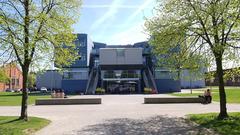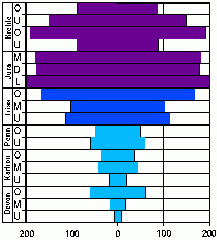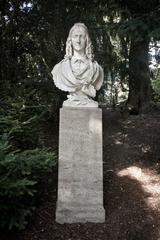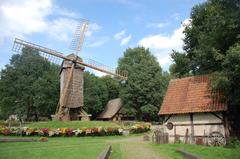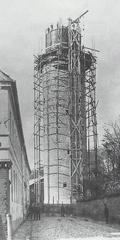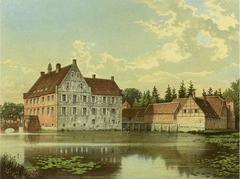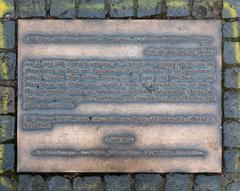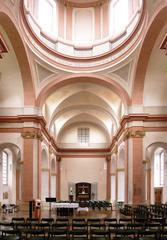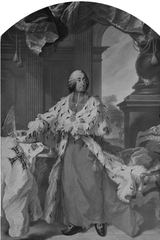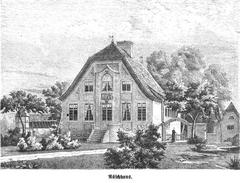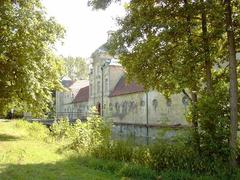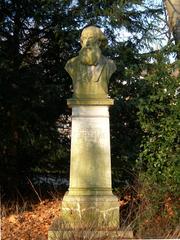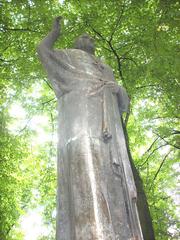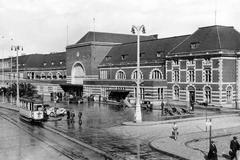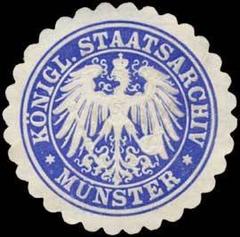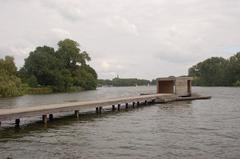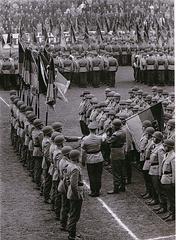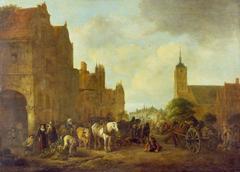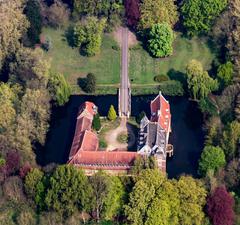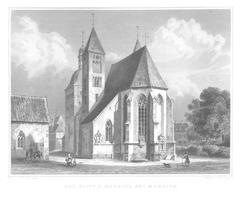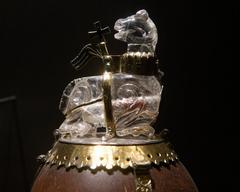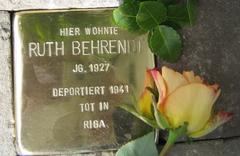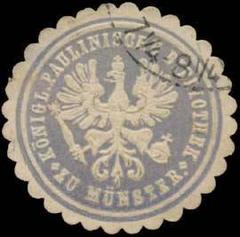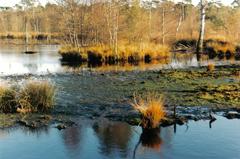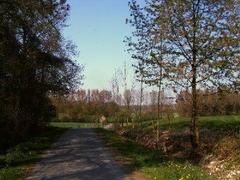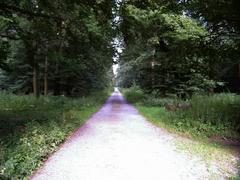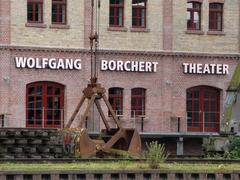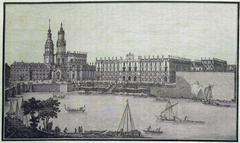Signal Iduna Building Visiting Hours, Tickets, and Münster Historical Sites Guide
Date: 14/06/2025
Introduction to Signal Iduna Building in Münster
In the vibrant heart of Münster, Germany, the Signal Iduna Building—locally called the Iduna-Hochhaus—serves as a striking emblem of Münster’s postwar resurgence and urban transformation. Erected in the 1960s, this 53-meter, 15-storey modernist high-rise was Münster’s first venture into vertical architecture. Its presence symbolized both the city’s economic recovery after World War II and its aspiration for a forward-looking urban identity, especially poignant given that nearly 90% of Münster’s historic center was destroyed during the conflict (Europe for Visitors).
Commissioned by the Signal Iduna Group, a leading German insurance and financial services company, the Iduna-Hochhaus exemplifies International Style architecture, with clean lines, functional design, and minimal ornamentation (Signal Iduna). Initially controversial for its contrast with the medieval and baroque skyline, the building has since become an integral part of Münster’s cityscape, illustrating how tradition and innovation coexist.
This guide provides a detailed overview of the Signal Iduna Building’s history, architectural features, visiting logistics, and its role within Münster’s rich tapestry of historical landmarks. Whether you are an architecture devotee, a history enthusiast, or a traveler eager to explore Münster’s unique blend of old and new, this article offers essential insights for your visit.
Contents Overview
- Introduction
- Historical Background and Architectural Significance
- Postwar Münster and the Rise of Modernism
- The Signal Iduna Group and Urban Identity
- Architectural Design and Construction
- Urban Impact and Reception
- Preservation and Modernization
- Symbolism and Legacy
- Visiting the Signal Iduna Building: Hours, Tours, and Practical Information
- Location and Access
- Visiting Hours and Tickets
- Guided Tours
- Accessibility
- Photography and Viewing Tips
- Nearby Münster Historical Sites
- St. Paul’s Cathedral: A Münster Icon
- Prinzipalmarkt: Marketplace and Cultural Heart
- General Visitor Information for Münster
- FAQs
- Visuals and Media
- Links and Further Reading
- Conclusion
Historical Background and Architectural Significance
Postwar Münster and the Rise of Modernism
After World War II, Münster faced the daunting task of reconstructing a city whose historic core was nearly obliterated (Europe for Visitors). The city government chose to retain its medieval street plan, blending restored historic facades with modern buildings—a decision that paved the way for architectural diversity.
The Iduna-Hochhaus, constructed in the 1960s, marked Münster’s leap into modernism and verticality. It represented not only pragmatic rebuilding but also Münster’s economic and cultural revival, aligning with broader trends across West Germany.
The Signal Iduna Group and Urban Identity
The Signal Iduna Group, established in the early 20th century, selected Münster as a regional base as part of its expansion (Signal Iduna). The construction of their high-rise headquarters was both a functional solution for office space and a bold architectural statement, signaling Münster’s renewed economic significance.
Architectural Design and Construction
Located at Salzstraße 38, the Iduna-Hochhaus rises 53 meters above the city, featuring 15 floors of office space (Penguin and Pia). The building’s International Style architecture is defined by a functional, grid-like façade and rhythmic window patterns, setting it apart from Münster’s ornate historical structures.
Urban Impact and Reception
At its unveiling, the building drew criticism from preservationists and residents who feared disruption of Münster’s storied skyline (Baltic Live Cam). Over time, however, the Iduna-Hochhaus has become a widely recognized symbol of Münster’s resilience and adaptability, sparking ongoing discussions about the balance between safeguarding heritage and embracing progress.
Preservation and Modernization
Successive renovations have kept the building functional and energy efficient, while accessibility improvements—such as ramps and elevators—ensure inclusivity (Signal Iduna). The exterior remains largely unchanged, maintaining its original modernist character.
Symbolism and Legacy
The Signal Iduna Building stands as a monument to Münster’s journey from devastation to renewal, encapsulating the city’s spirit of innovation while honoring its history. It remains an important example of mid-20th-century architecture in North Rhine-Westphalia.
Visiting the Signal Iduna Building: Hours, Tours, and Practical Information
Location and Access
Address: Salzstraße 38, 48143 Münster, Germany
The building is centrally positioned, within walking distance of landmarks such as Prinzipalmarkt, St. Lambert’s Church, and the Historical City Hall (Penguin and Pia). Münster’s excellent public transport and renowned cycling infrastructure provide convenient access (Wikipedia).
Visiting Hours and Tickets
The Signal Iduna Building is primarily an office building with no regular public visiting hours or ticketed entry. The foyer may be accessible during special events or by prior arrangement for guided tours. There are currently no standard admission fees.
To arrange a visit or tour: Contact the building management or the Münster Tourist Office in advance.
Guided Tours
Guided tours, scheduled by appointment, provide insights into the building’s history and architectural significance (Penguin and Pia). Broader architectural tours of Münster, available through the tourist office, often include the Iduna-Hochhaus among other modernist sites (Europe for Visitors).
Accessibility
Recent refurbishments have enhanced accessibility, with ramps and lifts now available (Signal Iduna). Visitors with specific needs should contact the building in advance to ensure accommodations.
Photography and Viewing Tips
While access to upper floors is limited, the building’s exterior makes a compelling photographic subject, especially when juxtaposed with Münster’s historic landmarks. Popular vantage points include the Prinzipalmarkt and pedestrian areas (Baltic Live Cam).
Nearby Münster Historical Sites
The Signal Iduna Building is an excellent starting point to explore Münster’s highlights, including the Prinzipalmarkt, St. Paul’s Cathedral, and the Schloss of the Westphalian Wilhelm University (Europe for Visitors).
St. Paul’s Cathedral: A Münster Icon
Introduction
St. Paul’s Cathedral (St.-Paulus-Dom) is one of Münster’s most revered historical landmarks, dating back to the 13th century. It is renowned for its exceptional Gothic and Romanesque architecture, stained glass windows, intricate woodwork, and the famous astronomical clock.
Visitor Information
- Opening hours: Daily, 9:00 AM to 6:00 PM (may vary on holidays)
- Admission: Free for general entry; guided tours and special exhibitions may require tickets (approx. €5 per person)
- Accessibility: Wheelchair access and assistance available on request
- Photography: Allowed, but no flash or tripods to protect artworks
Guided Tours and Events
Regular tours offer deeper insight into the cathedral’s art and history and can be booked in multiple languages. The cathedral also hosts concerts, religious ceremonies, and cultural events throughout the year.
Nearby Attractions
Within walking distance: Prinzipalmarkt, Münster Castle, Picasso Museum, and more.
More information: Münster Tourism
Prinzipalmarkt: Marketplace and Cultural Heart
Overview
The Prinzipalmarkt is Münster’s historic commercial and social center, with arcaded walkways, gabled merchant houses, and a lively atmosphere. Restored after World War II, it beautifully preserves Gothic and Renaissance styles.
Visitor Information
- Accessibility: Open to the public year-round; best explored on foot or by bike
- Shops and cafes: Typically open Monday–Saturday, 10:00 AM–8:00 PM
- Guided tours: Available through the Münster Tourist Information Center
- Special events: Münster Christmas Market, cultural festivals, open-air concerts
Nearby Landmarks
St. Lambert’s Church, Westphalian State Museum, Aasee Lake, and more.
Details and booking: Münster Tourist Information
General Visitor Information for Münster
Other Notable Sites
- Kreativkai: Modern waterfront district with art galleries, restaurants, and event spaces—showcasing Münster’s contemporary flair.
- Schloss Münster: The baroque palace of the Westphalian Wilhelm University, now a center for academic and cultural events.
Practical Tips
- Getting around: Münster is famous for its bike-friendly streets and reliable public transport.
- Language: English is widely spoken in tourist areas.
- Weather: Pack for changeable weather; Münster is known for its rain!
- Accessibility: Most public spaces and key sites are wheelchair-accessible, though some historic interiors may be limited.
Frequently Asked Questions (FAQ)
Q: Can I visit the Signal Iduna Building as a tourist?
A: The building is primarily an office space. Access is generally by prior arrangement or during special events/tours.
Q: Are there entrance fees for the Signal Iduna Building or other historical sites?
A: The Signal Iduna Building does not charge admission. Most public sites like Prinzipalmarkt are free; some museums and exhibitions may charge fees.
Q: How do I book a guided tour of the Signal Iduna Building?
A: Contact the building management or the Münster Tourist Office for scheduling.
Q: Is English spoken at visitor sites?
A: Yes, English support is widely available at major attractions and the tourist office.
Q: What is the best way to get around Münster?
A: Walking, cycling, and public transport are all convenient options.
Visuals and Media
To enhance your trip planning, seek out images of the Signal Iduna Building’s façade and Münster’s skyline. Maps highlighting walking routes between major sites and virtual tours (where available) are recommended for pre-visit orientation.
Links and Further Reading
- Visiting the Signal Iduna Building in Münster: Hours, History, and Architectural Highlights, 2025, Penguin and Pia
- Signal Iduna Group Company Information, 2025, Signal Iduna
- Münster City Overview, 2025, Europe for Visitors
- Münster Prinzipalmarkt and Cityscape, 2025, Baltic Live Cam
- Visiting St. Paul’s Cathedral in Münster: History, Tickets, and Travel Tips, 2025, Münster Tourism
- Visiting Münster’s Prinzipalmarkt: A Historic Landmark Guide, 2025, Münster Tourist Information
- Visiting Historical and Cultural Sites in Münster: A Guide Including the Signal Iduna Building, 2025, Oeffnungszeitenbuch.de
- signals-innovationhub.com
- germany.travel
- Audiala
Conclusion
The Signal Iduna Building is a testament to Münster’s remarkable capacity for renewal, bridging the city’s medieval heritage and modern aspirations. While public access is limited, its story is integral to understanding Münster’s transformation after World War II and its enduring commitment to architectural dialogue. Located near many of Münster’s treasured historical sites, the Signal Iduna Building offers a compelling vantage point for exploring the city’s rich cultural landscape.
To enrich your experience, download the Audiala app for curated guides, real-time updates, and exclusive tours. Stay connected via social media for news about Münster’s events and highlights. Embrace the opportunity to witness the interplay of history and modernity in Münster—where every street tells a story.
